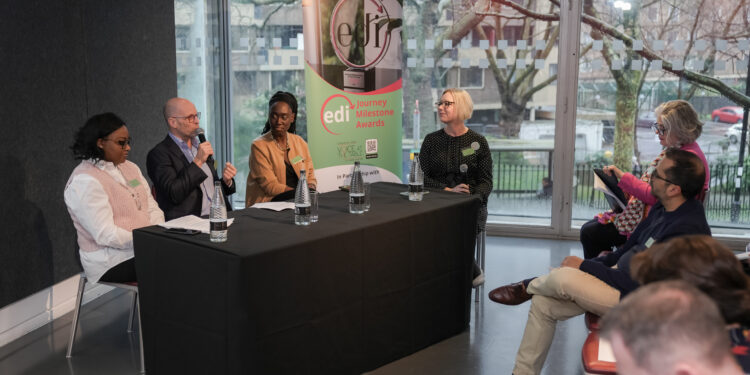As we prepared to celebrate this year’s International Women’s Day, I was reminded of the insights shared by our panel discussing how to take Diversity beyond gender. Because, although we’re celebrating women on IWD, one of the key themes this year (and in many ways every other year too) is how to Inspire Inclusion. And that’s not a conversation that’s relevant to women only. It’s easy for us to forget that gender is only one way to segment who we are. But if we focus on the person as a whole, we’re much more likely to get Diversity right.
Inspired by the discussions in our conference panel, Taking Diversity Beyond Gender – The necessary mindset shift, here are 5 things to bear in mind:
2. Women aren’t just one thing. The other thing that’s easy to forget is that, when we’re aiming to hire/promote/retain more women, we’re also hiring/promoting/retaining other diverse groups. While women make up approximately 50% of the world’s population, they also make up some of the other minority groups, depending on their ethnicity, sexuality, level of ability, age and so on. So, although we might measure how successful we are in improving our gender figures, we should remember that our success also covers other under-representations. As one of our speakers said, when she thinks of her own identity, she thinks of herself as being Black first, then she thinks of herself as being a woman.
3. Measuring gender Diversity is a way of measuring Inclusion. The conversation around how to take Diversity beyond gender inevitably focuses on Inclusion: How do we create a culture in which everyone feels valued? And how successful are we in creating this culture? It can be particularly difficult to measure levels of improvements for smaller underrepresented groups. But one way we can measure this is by measuring our impact on improving gender-based metrics. If, for instance, more women can move up through the organisation and fewer leave at a certain level, the implemented changes that have caused this improvement are also likely to improve Inclusion for other underrepresented groups. This means we can apply what we already know works to develop a successful intersectional approach that improves Diversity beyond gender alone.
4. Improve Emotional Intelligence (EQ) and Empathy and you improve Inclusion. Our panellists agreed that some of the key leadership characteristics defining today’s Inclusive Leader are EQ and empathy. EQ is important so that we can feel comfortable being more vulnerable in the workplace. Being more vulnerable strengthens our empathy muscle by allowing us to share and in this way then invite others to share their journey. This helps us recognise and mitigate bias and understand the impact of microaggressions.
5. Best Practice. It can be tempting to look for a region in the world that is leading the conversation on EDI, and this was one of the questions raised by a delegate at our conference. When it comes to Diversity, is the UK ahead of other countries? What about the US, where this topic seems to be sitting in one of the two ends of the spectrum: on one hand, EDI with an activist purpose, and on the other hand, EDI being seen as a distraction from everything else that’s more important. And what about countries in Asia and beyond?
We heard that Australia’s approach to disability is forward-thinking, with a focus on empowering and enabling rather than ‘rescuing’, but what about the other areas? And how do we reconcile this conversation from a global perspective with countries in which some of the elements are literally punishable by law? As there is no ‘one size fits all’ approach when it comes to EDI, the conversation around focusing on gender becomes even more important, even if it’s just about developing some norms and practices that we know work for one Diversity group and trialling them with others.
Whatever conversations you’ll be having around IWD, the most important part is to have them. Engage as many minds in this topic as possible and continue to emphasise their importance until people around you are prepared to take some positive action. And remember, small changes in behaviour lead to big mindset shifts.
Suggested Reading
Taking Diversity Beyond Gender: The Necessary Mindset Shift
7 Ways to Ensure Your Employee Network is A Success




